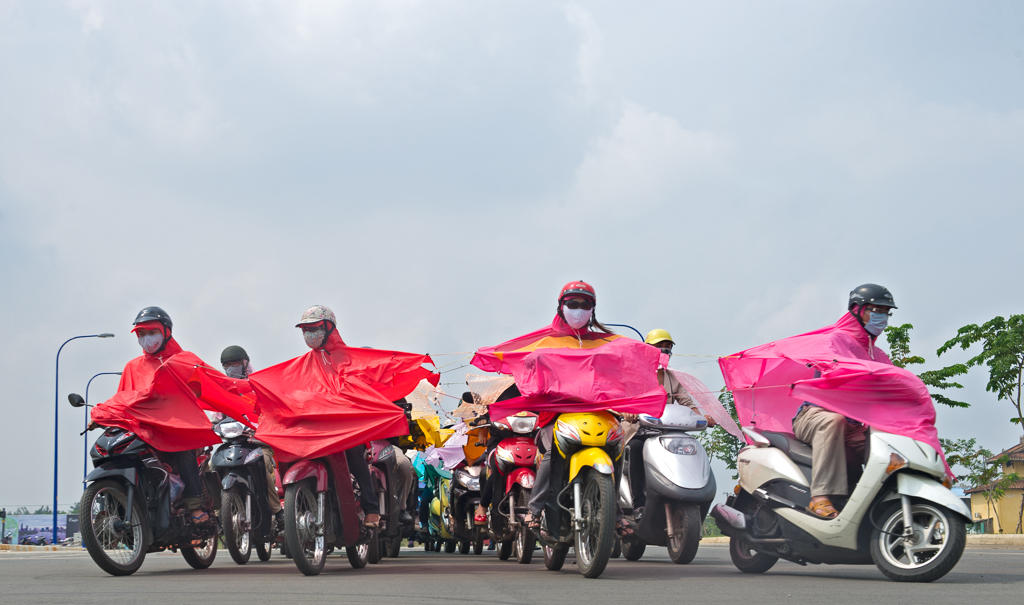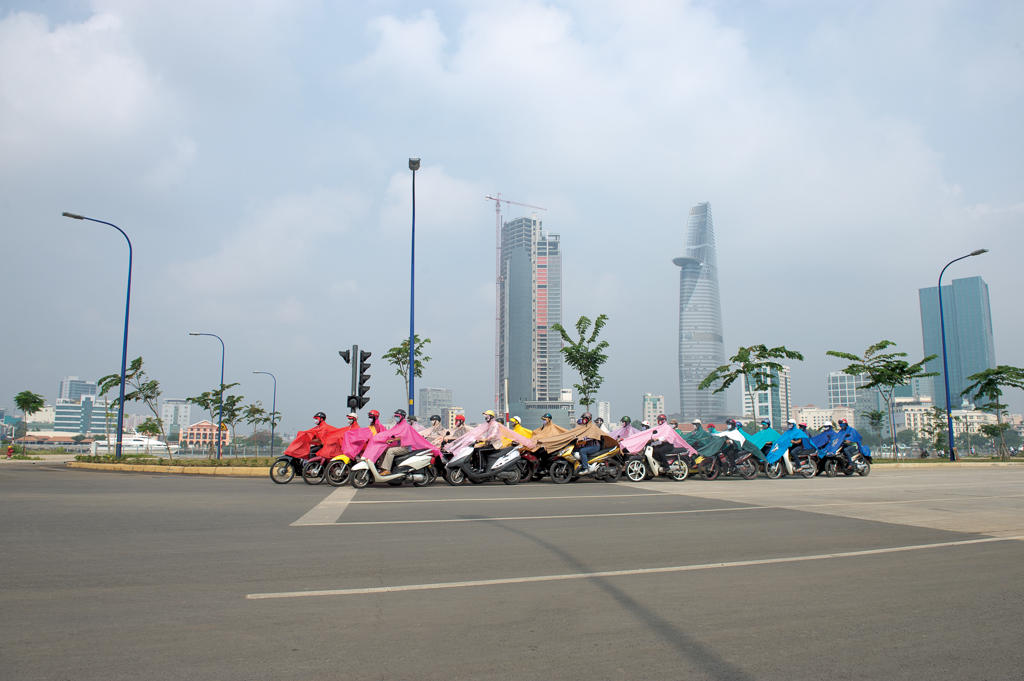Editor of publications Amy Pickworth, intern Joanna Cortez, and curatorial assistant of contemporary art A. Will Brown interview UuDam Tran Nguyen about his single channel video Waltz of The Machine Equestrians—The Machine Equestrians (2012).
Amy Pickworth & Joanna Cortez: Can you tell us a little about your experience growing up in Vietnam? Was your childhood set an urban or rural landscape, and which version of Vietnam—the urban/new or rural/traditional—do you feel most emotionally attached to today?
UuDam Tran Nguyen: I was born in Kontum, a small town in the Central Highland of Vietnam during the Vietnam War. I was lucky to grow up with nature around me. Even though I feel emotionally attached to rural landscape—the trees, small animals, red volcanic soil, running springs, and the free time I spent roaming with friends after school—I later became addicted to the Saigon urban landscape, where I spent much of my time growing up. It is funny, I miss the noise and the busyness of Saigon when I am away from it. I am a man of big cities. When I was first in Portland, Oregon, I insisted that I had to move to Los Angeles or New York.
AP & JC: The ponchos, helmets, and surgical masks render the riders anonymous; we can’t even determine their gender most of the time. Was this important to the piece, and why?
UTN: When I went back to Vietnam for the first time, I was amazed that most of the riders on the streets were unrecognizable. They were armed with colorful masks, helmets, riding jackets, sunglasses, and gloves. Most of the women also wear brightly decorated sun skirts that cover them from their waist down to their knees. I am very interested in this sense of anonymity. In my mind, the riders were equestrians with machine “horses.” And all the gear they wear makes them mysterious, like modern knights in full colorful armor. It also reflects the realities that Saigon’s people are facing. They are always fighting to protect themselves from the elements. Each morning, the energy present in the formation of hundreds of scooters waiting at red lights before marching forward is amazing. This sight made me think, and want to do something about it and with it.
AP & JC: Who are these riders, anyway, and how did they come to be in your film?
UTN: When I first conceived of the film, I wondered if the concept would work. So I recruited friends and relatives to come out for a test. After that, I knew that group riding with connected ponchos could be done, and I asked them to help me with the subsequent shoots. I was lucky to have them play the lead in the group: they were with me through all four times that we shot footage, and they rode very well. The front row is important because they keep the pace for the march. If one scooter in the front stops, there would be a huge mess. The first two rows are my friends and relatives, and the other people are hired riders.
AP & JC: How was the choreography developed? How many times was it practiced before filming?
UTN: It was developed rather organically. I had no idea how I would put everything together at first, but as the shooting progressed, it became apparent that the work should be structured like a dance. Then I talked to my editor, and he did a great job editing the film.
AP & JC: What are you excited about that you are working on now?
UTN: I am working on three projects at the moment. One project that I’m very excited about that is near completion is titled License to Draw. In this project, viewers can draw on a physical surface or canvas that is located in Japan from wherever they are. It doesn’t matter if they are physically in Rhode Island, Africa or the Middle East. All they need is an app (LtoDraw, which I provide for free) on their iPhone or smartphone. Using this app’s touch buttons, they will be able to move a pen in Koganecho Bazaar, Japan. They can draw what they wish, 24 hours a day, for the length of the exhibition, which is up for three months. License to Draw will open in Yokohama on July 31, 2014. If you are interested in participating, visit uudam.net for more information.
A. Will Brown: What are some of your artistic references or influences: films, videos, directors, artists, performers?
UTN: I was born into a family of artists. My dad is a painter, writer and poet: Rừng. I think I inherited the artistic gene from him. Studying under the Communist system and later in the U.S., I have the knowledge of both sides and places, which is quite helpful. Having the educational background that I do gives my approach to art a nice balance.
I also have studied with some great teachers, such as Charles Ray, Sarah Sze, Paul McCarthy, Jim Welling, critic Jerry Saltz, and Phong Bui, to name just a few. My time in New York City during my MFA program also influenced my artistic practice greatly. Other artists that I admire include Paul Chang, Damien Hirst, Mathew Barney, Mika Rottenberg, but there are just too many to name here.
AWB: The video engages both humor and criticality with such ease and success, can you explain, or talk a bit about, how you see the importance of meshing these two, and how this plays out in your other work?
UTN: In most of my work, there is a sense of humor. I am not sure how it got there. It just did. In some initial writing about Waltz of the Machine Equestrians, I liken a legendary Vietnamese hero, Saint Gióng, to the riders in the video. Saint Gióng was the son of a human mother and the divine will. In 1690 BCE, he rode an iron horse that spit fire and wore iron armor while wielding a great iron stick to defend his country from foreign invasion. The contemporary equestrians of Vietnam ride “horses” that spit out smoke, wear colorful rain ponchos, and carry laptops in their backpacks to fight for better jobs in a new global economy. In the story of Saint Gióng, after his victory, he came home to bow down to his parents and then flew to heaven. The new heroes of Vietnam will have to stay and fight the good fight into the future. I want to say good luck to them. The image of them breaking free at the end of the video gives one a smile, a sense of liberation and hope.


